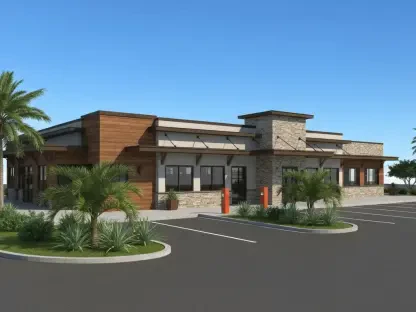As travelers enter a hotel lobby, they subconsciously gauge the atmosphere, standards, and service they can expect during their stay. Have you ever considered how the people behind the scenes orchestrate these impressions? Fresh leadership can significantly enhance how guests perceive hospitality, even in subtle ways.
A Dynamic Shift in Hospitality Leadership
Across the hospitality industry, a wave of leadership changes is taking place. Research highlights a significant increase in the turnover rates of general managers and other key leadership positions within the past few years. This sweeping transformation reflects a growing recognition of the need to continuously adapt in response to evolving guest expectations and heightened competitive pressures. Guests, quick to notice inefficiencies, often find themselves pleasantly surprised by improvements under new management strategies, exemplifying the direct impact effective leadership can have on guest satisfaction.
Bridging Guest Satisfaction and Business Growth
In hospitality, leadership plays a pivotal role in harmonizing guest satisfaction with business growth. The industry faces myriad challenges, such as evolving consumer preferences, technological advancements, and fierce competition, which constantly reshape operational landscapes. In response, hotel chains and boutique establishments alike are revitalizing their leadership teams to ensure they remain competitive. This shift emphasizes recruiting visionary leaders who can navigate the complexities of modern-day hospitality while maintaining the central focus of delivering exceptional guest experiences.
Innovation and Adaptability Drive Change
Strategic revamps in hotel leadership are rooted in the necessity for innovation and adaptability. For example, Hilton Garden Inns and Embassy Suites have seen firsthand benefits from successful leadership transitions. By promoting from within or attracting experienced talent from external sources, hotels aim to infuse fresh ideas while respecting institutional knowledge. The balance between these strategies often determines the effectiveness of leadership changes. Internal promotions ensure continuity and loyalty, while external hires bring diverse perspectives and novel approaches critical for adapting to industry shifts.
Insights from Industry Leaders
Industry veterans often emphasize the crucial importance of seasoned leadership in optimizing operational efficiencies. A general manager with a strong track record can be instrumental in transforming a hotel’s market performance. Experts underscore that embracing trending leadership styles can reshape a hotel’s culture, ultimately refining the guest experience. Anecdotes from current general managers elucidate how their roles present both challenges and opportunities, revealing the dynamic nature of today’s hospitality leadership environment.
Strategies for Integration and Continuity
For hotels, smoothly integrating new leadership is vital to maintaining operational stability. Developing a comprehensive strategy that aligns with specific market demands can contribute to the seamless incorporation of leadership changes. Emphasis on identifying and nurturing internal talent prepares organizations for potential leadership transitions, ensuring that they remain agile and competitive. Actionable frameworks offer guidance on aligning leaders with regional and market-specific needs, facilitating a cohesive operational approach amid change.
Paving the Path for Future Success
The recent leadership changes in the hotel industry represent a significant step towards a future poised for diverse possibilities. As hotels invest in adept leaders who possess both operational expertise and strategic vision, they position themselves to tackle emerging challenges with confidence. This evolution in leadership recognizes the imperative of aligning with market and consumer dynamics. Looking ahead, the enduring focus on cultivating guest satisfaction and operational excellence promises a progressive trajectory for hotels determined to lead in a rapidly evolving landscape.









